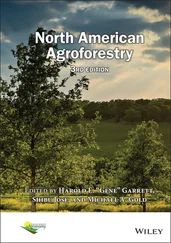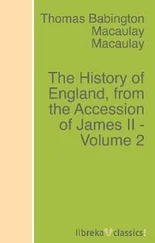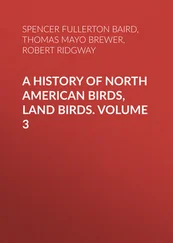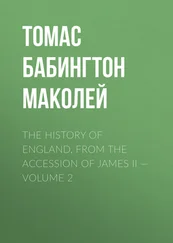Robert Ridgway - A History of North American Birds, Land Birds. Volume 1
Здесь есть возможность читать онлайн «Robert Ridgway - A History of North American Birds, Land Birds. Volume 1» — ознакомительный отрывок электронной книги совершенно бесплатно, а после прочтения отрывка купить полную версию. В некоторых случаях можно слушать аудио, скачать через торрент в формате fb2 и присутствует краткое содержание. Жанр: foreign_antique, Биология, foreign_edu, на английском языке. Описание произведения, (предисловие) а так же отзывы посетителей доступны на портале библиотеки ЛибКат.
- Название:A History of North American Birds, Land Birds. Volume 1
- Автор:
- Жанр:
- Год:неизвестен
- ISBN:нет данных
- Рейтинг книги:3 / 5. Голосов: 1
-
Избранное:Добавить в избранное
- Отзывы:
-
Ваша оценка:
- 60
- 1
- 2
- 3
- 4
- 5
A History of North American Birds, Land Birds. Volume 1: краткое содержание, описание и аннотация
Предлагаем к чтению аннотацию, описание, краткое содержание или предисловие (зависит от того, что написал сам автор книги «A History of North American Birds, Land Birds. Volume 1»). Если вы не нашли необходимую информацию о книге — напишите в комментариях, мы постараемся отыскать её.
A History of North American Birds, Land Birds. Volume 1 — читать онлайн ознакомительный отрывок
Ниже представлен текст книги, разбитый по страницам. Система сохранения места последней прочитанной страницы, позволяет с удобством читать онлайн бесплатно книгу «A History of North American Birds, Land Birds. Volume 1», без необходимости каждый раз заново искать на чём Вы остановились. Поставьте закладку, и сможете в любой момент перейти на страницу, на которой закончили чтение.
Интервал:
Закладка:
Nor is the class of birds as now limited confined to the single order of which only we have living representatives. In fossil forms we have, if the differences assumed be confirmed, types of two distinct orders, one being represented by the genus Archæopteryx and another by the genera Ichthyornis and Apatornis of Marsh. The first has been named Saururæ by Hæckel; the second Ichthyornithides by Marsh.
Compelled thus to question the existence of any groups of ordinal value among recent birds, we proceed now to examine the grounds upon which natural subdivisions should be based. The prominent features in the classification of the class until recently have been the divisions into groups distinguished by their adaptation for different modes of life; that is, whether aerial or for progression on land, for wading or for swimming; or, again, into Land and Water Birds. Such groups have a certain value as simply artificial combinations, but we must not be considered as thereby committing ourselves to such a system as a natural one.
The time has scarcely arrived to justify any system of classification hitherto proposed, and we can only have a sure foundation after an exhaustive study of the osteology, as well as the neurology and splanchnology, of the various members. Enough, however, has already been done to convince us that the subdivision of the class into Land and Water Birds does not express the true relations of the members embraced under those heads. Enough has also been adduced to enable us to group many forms into families and somewhat more comprehensive groups, definable by osteological and other characters. Such are the Charadrimorphæ, Cecomorphæ, Alectoromorphæ, Pteroclomorphæ, Peristeromorphæ, Coracomorphæ, Cypselomorphæ, Celeomorphæ, Aëtomorphæ, and several others. But it is very doubtful whether the true clew to the affinities of the groups thus determined has been found in the relations of the vomer and contiguous bones. The families, too, have been probably, in a number of cases, especially for the passerine birds, too much circumscribed. The progress of systematic ornithology, however, has been so rapid within the last few years, that we may be allowed to hope that in a second edition of this work the means may be furnished for a strictly scientific classification and sequence of the families. (T. N. G.)
A primary division of recent birds may be made by separation of the ( a ) Ratitæ , or struthious birds and their allies,—in which the sternum has no keel, is developed from lateral paired centres of ossification, and in which there are numerous other structural peculiarities of high taxonomic import,—from the ( b ) Carinatæ , including all remaining birds of the present geologic epoch. Other primary divisions, such as that into Altrices and Præcoces of Bonaparte, or the corresponding yet somewhat modified and improved Psilopaedes and Ptilopaedes of Sundevall, are open to the serious objections that they ignore the profound distinctions between struthious and other birds, require too numerous exceptions, cannot be primarily determined by examination of adult specimens, and are based upon physiological considerations not necessarily co-ordinate with actual physical structure.
In the following scheme, without attempting to indicate positive taxonomic rank, and without committing myself finally, I present a number of higher groups into which Carinate birds may be divided, capable of approximately exact definition, and apparently of approximately equivalent taxonomic value. Points of the arrangement are freely drawn from the writings of various authors, as will be perceived by those competent to judge without special references. I am particularly indebted, however, to the late admirable and highly important work of Professor Sundevall, 4 4 Methodi naturalis avium disponendarum tentamen. Stockholm, 1872-73.
from which very many characters are directly borrowed. The arrangement, in effect, is a modification of that adopted by me in the “Key to North American Birds,” upon considerations similar to those herewith implied. The main points of difference are non-recognition of three leading groups of aerial, terrestrial, and natatorial birds,—groups without morphological basis, resting simply upon teleological modification; a general depreciation of the taxonomic value of the several groups, conformably with the considerations presented in the preceding pages of this work; abolishing of the group Grallatores ; and recognition of a primary group Sphenisci . 5 5 This group is insusceptible of definition. The wading birds, as usually allocated, do not possess in common one single character not also to be found in other groups, nor is the collocation of their characters peculiar.
A. PASSERES. 6 6 Corresponding closely with the Linnæan and earlier Sundevallian acceptation of the term. Equivalent to the later Oscines of Sundevall.
Hallux invariably present, completely incumbent, separately movable by specialization of the flexor hallucis longus , with enlarged base and its claw larger than that of the middle digit. Neither second nor fourth toe versatile; joints of toes always 2, 3, 4, 5, from first to fourth. Wing-coverts comparatively short and few; with the exception of the least coverts upon the plica alaris , arranged in only two series, the greater of which does not reach beyond the middle of the secondary remiges. 7 7 As remarked by Sundevall, exceptions to the diagnostic pertinence of these two characters of hind claw and wing-coverts taken together are scarcely found. For, in those non-passerine birds, as Raptores and some Herodiones , in which the claw is enlarged, the wing-coverts are otherwise disposed; and similarly when, as in many Pici and elsewhere, the coverts are of a passerine character, the feet are highly diverse.
Rectrices twelve (with rare anomalous exceptions). Musical apparatus present in greater or less development and complexity. Palate ægithognathous. Sternum of one particular mould, single-notched. Carotid single (sinistra). Nature highly altricial and psilopædic.
a. Oscines. 8 8 Laminiplantares of Sundevall plus Alaudidæ .
Sides of the tarsus covered in most or all of their extent with two undivided horny plates meeting behind in a sharp ridge (except in Alaudidæ ; one of the plates imperfectly divided in a few other forms). Musical apparatus highly developed, consisting of several distinct pairs of syringeal muscles. Primaries nine only, or ten with the first frequently spurious, rarely over two thirds the length of the longest, never equalling the longest.
b. Clamatores. 9 9 Scutelliplantares of Sundevall minus Alaudidæ .
Sides of the tarsus covered with divided plates or scales variously arranged, its hinder edge blunt. Musical apparatus weak and imperfect, of few or incompletely distinguished syringeal muscles (as far as known). Primaries ten with rare exceptions, the first usually equalling or exceeding the rest.
B. PICARIÆ. 10 10 Nearly equivalent to the Linnæan Picæ . Equal to the late (1873) Volucres of Sundevall.
Hallux inconsiderable, weak or wanting, not always incumbent, not separately movable by distinction of a special muscle, its claw not longer than that of the middle toe unless of exceptional shape (e. g. Centropus ). Second or fourth toe frequently versatile; third and fourth frequently with decreased number of joints. Wing-coverts for the most part larger and in more numerous series than in Passeres , the greater series reaching beyond the middle of the secondary quills (except in many Pici and some others). Rectrices commonly ten (eight to twelve). Primaries always ten, the first only exceptionally short (as in Pici ). Musical apparatus wanting, or consisting of a muscular mass, or of not more than three pairs of syringeal muscles. Palate desmognathous or ægithognathous. Sternum of non-passerine character, its posterior border entire or doubly notched or fenestrate. Carotid single or double. Nature completely altricial, but young sometimes hatched with down 11 11 A polymorphic group, perfectly distinguished from Passeres by the above characters in which, for the most part, it approximates to one or another of the following lower groups, from which, severally, it is distinguished by the inapplicability of the characters noted beyond. My divisions of Picariæ correspond respectively to the Cypselomorphæ , Coccygomorphæ , and Celeomorphæ of Huxley, from whom many of the characters are borrowed.
(e. g. Caprimulgidæ ).
Интервал:
Закладка:
Похожие книги на «A History of North American Birds, Land Birds. Volume 1»
Представляем Вашему вниманию похожие книги на «A History of North American Birds, Land Birds. Volume 1» списком для выбора. Мы отобрали схожую по названию и смыслу литературу в надежде предоставить читателям больше вариантов отыскать новые, интересные, ещё непрочитанные произведения.
Обсуждение, отзывы о книге «A History of North American Birds, Land Birds. Volume 1» и просто собственные мнения читателей. Оставьте ваши комментарии, напишите, что Вы думаете о произведении, его смысле или главных героях. Укажите что конкретно понравилось, а что нет, и почему Вы так считаете.












